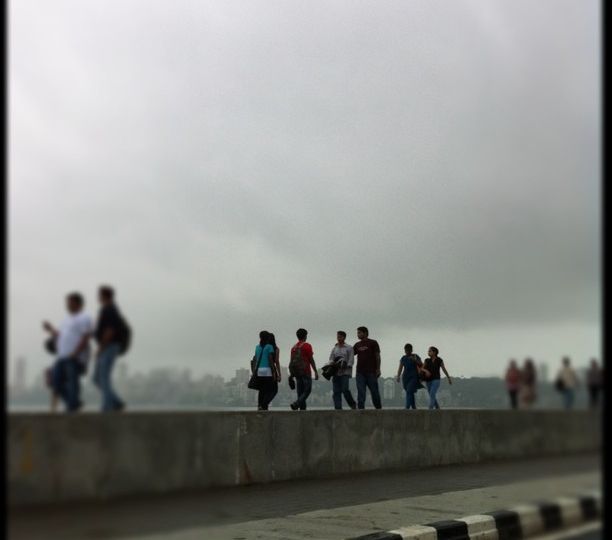
Questions about the public and the private are, in many ways, the bread and butter of feminist work in the humanities and social sciences. For me, as a geographer, these questions are key to thinking about bodies and spaces. In this short essay, I will try and ask how the public and the private have not only produced gender but also map the logics of caste and class.
A substantial historical scholarship in India has looked critically at the question of public and private spaces and their significance to modes of middle-class respectability. Most significantly, this scholarship argues that the educated urban middle-classes in the late 19th and early 20th centuries articulated the ‘inside’ space of the home – the private sphere – as a site of pure national life, preserved from the ravages of colonialism. In attributing women to this sphere, nationalist discourse then simultaneously articulated middle-class femininity as identified with the nation-state. The making of the modern, albeit uniquely Indian, family home became a significant site of nationalist activity in this period. Historians have shown also that simultaneously, the urban public and those dwelling in it – both ‘lower-caste’ and working-class women and men – came to be stigmatised as ‘backward’ subjects, posing a danger to ‘good’ middle-class and implicitly ‘upper-caste’ women.
That this discourse has survived into the present, if in somewhat transformed ways, is evident. Prominently, in the past five years, the question of young women’s public presence has burst into popular discourse in debates on sexual violence in Indian cities. Following the brutal rape and murder of a Delhi student on a bus in December 2012, young women took to the streets to assert their right to the city as a space of pleasure. The Pinjra Tod movement led by young women who are university students in New Delhi, has highlighted in particular, the problem of hostel curfews in reinforcing norms of respectability by policing young women’s access to the city. Simultaneously, a Hindu right-wing discourse stigmatises Muslim and Dalit men as hyper-sexualised threats to respectable and implicitly ‘upper-caste’ Hindu women: the discourse of Love Jihad – the idea that Muslim men are waging a religious war by seducing and converting Hindu women – as well as the work of vigilante squads is key to this.
Public and private are thus categories that pose problems for a feminist politics in a variety of ways: literally placing normative masculinity and femininity, as well as mapping the urban, within a politics of respectability. In this, they suggest ways in which large-scale political questions – around, for instance, the war on terror and the making of Muslim subjects into threatening figures – are rendered intimate in everyday life. They also make visible the idea of gender as a field of power, to paraphrase Joan Wallach Scott, rather than commenting on reified female or male spaces. The mapping of ‘good womanhood’ to private spaces thus not only speaks to the circumscription of middle-class women’s mobility and access to public spaces, but also to the stigmatising of the bodies of publicly visible women, as well as of working-class, ‘lower-caste’ and ethnic minority men.
My own research began with an ethnographic study of young women in urban Southern India. During this project, something I wrote about was a well-known aspect of everyday life for young people in Indian cities: that the best places to engage in sexual intimacy were not the inside spaces of home, or the hostel, or even a hotel room, but public sites such as beaches and parks. The young women I met told me that it was next to impossible to sneak in a sexual partner at home or in a hostel, and getting a hotel room could be seen as disreputable. Indeed, many hotels do not let rooms to heterosexual couples who aren’t married. Ironically, this atmosphere of surveillance and control meant that the only places that were ‘safe’ for sex were public places where parents and hostel wardens were unlikely to ‘catch’ couples. Of course, increasingly right-wing vigilante groups – anti-Romeo squads for instance – do this work, but still, many preferred to risk it on the beach, rather than face almost certain discovery at home, or in a hotel.
What is most interesting about these practices of sex in public is that they invert the popular idea that the public spaces of Indian cities are dangerous for women, and that private spaces – homes and hostels, as well as commercial establishments such as malls that tightly police entry and enforce surveillance – are places of safety. Instead, I found that young women saw these ‘inside’ spaces as places where they were constantly watched and hence had to embody respectable modes of femininity. In public, on the other hand, they embraced risk: pleasure and danger, as a substantial feminist scholarship has long argued, go hand in hand. In embracing ‘risk’ in public places, young women sought to assert their right to pleasure and fun beyond the bounds of surveillance.
To conclude: ideas about pleasure and danger have been key to the ways in which gender and sexuality engage ideas about public and private space. While some of these questions seem old, they continue to be renewed in public debate on competing claims to public spaces. Ideas about public and private spaces also speak to the ways in which caste and class shape ideas about respectability, thus marking some places as ‘safe’ and others as ‘risky’.
इस लेख को हिंदी में पढ़ने के लिए यहाँ क्लिक करें।